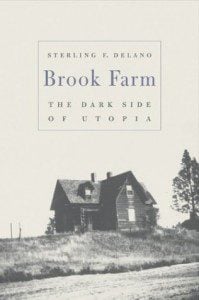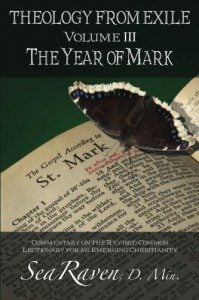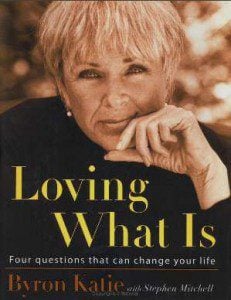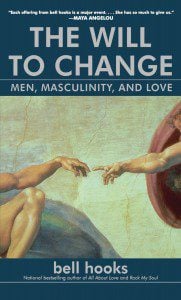The following is the second of two lectionary commentaries on the Gospel lesson for the 4th Sunday of Advent.The first is titled “Hail Mary, Full of Grace” and focuses on the first part of this week’s this week’s reading from Luke 1.
Focal Question 1: What would Christianity look like if the focus were birth, not death; human flourishing, not suffering; and this world, not the next?
Focal Question 2: How is God inviting you in the coming days and weeks to echo some form of Mary’s words of humble openness and acceptance: “Yes, I see. I’m ready. Let it be with me just as you say.”
In my previous lectionary commentary, we heard the angel’s words to Mary that inspired the beginning of the Ave Maria: “Hail Mary, full of grace, the Lord is with thee.” Her first response to the Gabriel’s appearance understandably was stunned silence. In the words of scripture, “she was much perplexed by his words and pondered what sort of greeting this might be.” Accordingly, the invitation of Advent is to wait patiently for what is already in the process of being birthed resonates with Mary’s shock that God was taking the initiative. Mary didn’t ask for a messenger from God to appear; the angel simply showed up unexpectedly. The parallel for us today may be that God is always birthing new life in our midst in ways that we are not consciously aware of beforehand.
One of the parallel lessons we are invited to learn in this season of the liturgical year is that God is always at work in surprising ways. And God is engaged in this surprising work in all ages, not merely in the first century. The 14th-century German mystic Meister Eckhart phrased this idea provocatively when he wrote: “What is the good if Mary gave birth to the Son of God 2000 years ago, if I do not give birth to God today? We are all Mothers of God, for God is always needing to be born.”
One of the most stunning part of the “Hail Mary” prayer is the title attributed to Mary, “Mother of God.” The conception of Mary as “Mother of God” has provided a much-needed feminine balance in the heavily male-dominated Roman Catholic tradition. The Eastern Orthodox Christian tradition also has a strong emphasis on Mary as the Mother of God, which can be seen in the frequent use of the term Theotokos in Orthodox Christian writings. The Greek word theo-tokos literally means “God-bearer.” It speaks most specifically to Mary as the one who gave birth to God, but more generally to the way all Christians are called to emulate Mary’s willing vulnerability to use her life, her body, her very self to bear witness — to birth — God into the world.
Jesus’ life shows us what it looks like when God is birthed into the world. Jesus also pointed us toward what birthing God into the world looks like whenever he talked about the “Kingdom of God.” Martin Luther King, Jr. was likewise calling us to birth God into the world when he called us to become the Beloved Community.
Life, birth, and growth: Mary’s unexpected pregnancy, Jesus’ life, and the lives of all those like Martin Luther King, Jr., Gandhi, and Dorothy Day show us what it looks like to birth God into the world. Tragically, male-dominated Christian theology too often has pointed us in the opposite direction: toward death, suffering, and loss. But in recent decades feminist theologians such as Grace Jantzen have proposed that we should shift our focus from theologies that are “preoccupied with violence, sacrifice, and death, and built upon mortality” — and instead “begin with birth, and with the hope and possibility and wonder implicit in it.”
She similarly asks, “What would Christianity look like if the focus were birth, not death; human flourishing, not suffering; and this world, not the next?” Advent is a time for pondering these possibilities.
As we turn from Mary’s silent pondering to her reply, we hear her ask first, “How can this be, since I am a virgin?” My inclination is to proceed cautiously because I believe the most important point being made here is not about biology, but about theology and politics. Jesus was neither the first nor the last person whose origins were attributed to a “virgin birth.” Perhaps most significantly in this case, Julius Caesar was said to have been born of a virgin. Decades before Jesus‘ birth (in 19 B.C.E. to be precise) Virgil published the Greco-Roman classic The Aeneid, which claimed a divine origin for the line of Caesar: “From this noble line shall be born the Trojan Caesar, who shall extend his empire to the ocean, his glory to the stars, a Julius name descended from the great Julus!” So, first and foremost, the story of Jesus’ virgin birth is similar to the declaration that “Jesus is Lord”; both are different ways of declaring one’s allegiance to Jesus instead of to Caesar.
That being said, there are many different aspects of the virgin birth story to consider. When I toured Israel as an undergraduate, one of the places we visited in Nazareth was the Basilica of the Annunciation, a church built on the spot where tradition holds that the angel announced Jesus’ conception to Mary. While there I remember some of us discussing — half-jokingly and half-seriously — how exactly Mary broke the news to her parents. Since the angel appeared to her and not to her parents, what was she supposed to say? Something like, “Don’t worry, Dad, it’s God’s baby?” Settling aside any potential blasphemy for a moment, I believe that we are so familiar with this story that we sometimes fail to consider the many difficult implications of Mary’s situation as an unwed teenager. At the same time Advent invites us to focus, not only on Mary’s socially-suspect pregnancy, but also on the hope, possibility, and wonder associated with all births.
And Mary’s second response, following her incredulous initial question, is humility. Mary said, “Here am I, the servant of the Lord; let it be with me according to your word.” Just as Gabriel’s greeting, “Hail Mary,” inspired the Ave Maria prayer that has been prayer countless times and rendered into unforgettable music, so too, Mary’s response, “Let it be” has also inspired artists — perhaps most famously as the title track of the Beatles’ 12th and final studio album: Let It Be.
From the perspective of Advent, I invite you to hear the Beatles’ “Let it Be” as if for the first time. Listen with the words of Mary echoing in your ear. Listen with an openness to how God may be calling you to slow down, open your eyes in wonder, and expectantly wait for is already in the process of being born. How is God inviting you in the coming days and weeks to echo some form of Mary’s words of humble openness and acceptance: “Yes, I see. I’m ready. Let it be with me just as you say.”Give yourself permission to be still and listen:
http://www.youtube.com/watch?v=RdopMqrftXs
Archbishop of Canterbury Rowan Williams, in his Advent book Ponder These Things: Praying with Icons of the Virgin, writes that: “There is a poem by Rilke, ‘The Angel,’ in which the poet warns us against inviting angels into the house, because they will turn the whole place upside down and seek out all the hidden corners and mould us into new shapes.”
When we open ourselves to God, when we echo Mary’s prayer, “Let it be,” we may find ourselves turned upside down and our prioritizes rearranged, as Mary experienced when Gabriel appeared in her house. A few verses from our focal scriptural, we see a model of reshaped priorities in Mary’s Song, called “The Magnificat.” (For more, see my lectionary commentary on “Magnificat! Learning to Sing Mary’s Song.”)
For now, I invite you to pause in a few moments of contemplative silence. During this time, I invite you to continue to ponder:
How God is surprising me this Advent season?
How am I being called to slow down or let go?
How does it feel to begin to pray an echo of Mary’s open-hearted response, “May it be so. Just as you say. Let it be. Let it be. Let it be.”
Take some time to prayerfully journal how God is speaking to you in response to these questions.
Notes
1 Grace Jantzen, Becoming Divine: Towards a Feminist Philosophy, 2.
2 The paraphrase of Mary’s words is adapted from Eugene Peterson’s translation, The Message.
3 I was unable to located the exact Rilke poem titled “The Angel” to which Williams refers. Perhaps he is quoting from memory and couldn’t find the exact poem either since he doesn’t footnote a reference! If you know where I can locate a copy of the poem, please let me know in the comments section. (Note: One reader suggests this link may be the poem in question: http://rainer-maria-rilke.de/080032derengel.html. If I ever meet Williams in person, I hope to ask him.)
Resources for Reclaiming a More Meaningful Advent and Christmas Season
- Marcus Borg and John Dominic Crossan, The First Christmas: What the Gospels Really Teach About Jesus’s Birth.
- Michael Slaughter, Christmas Is Not Your Birthday: Experience the Joy of Living and Giving like Jesus.
- Anna Getty, I’m Dreaming of a Green Christmas: Gifts, Decorations, and Recipes that Use Less and Mean More.
- Bill McKibben, Hundred Dollar Holiday: The Case For A More Joyful Christmas.
- Jo Robinson, Unplug the Christmas Machine: A Complete Guide to Putting Love and Joy Back into the Season.
- Rick McKinley, et al, Advent Conspiracy: Can Christmas Still Change the World?
- The Advent Conspiracy: www.adventconspiracy.org
- New American Dream, “Simplify the Holidays”: www.newdream.org/holiday
- “Tips for Parenting in a Commercial Culture”:www.newdream.org/kids/kids-brochure.pdf
- Buy Nothing Christmas www.buynothingchristmas.org.
The above is the second of two lectionary commentaries on the Gospel lesson for the 4th Sunday of Advent.The first is titled “Hail Mary, Full of Grace” and focuses on the first part of this week’s this week’s reading from Luke 1.
The Rev. Carl Gregg is a trained spiritual director, a D.Min. candidate at San Francisco Theological Seminary, and the pastor of Broadview Church in Chesapeake Beach, Maryland. Follow him on Facebook (facebook.com/carlgregg) and Twitter (@carlgregg).
















